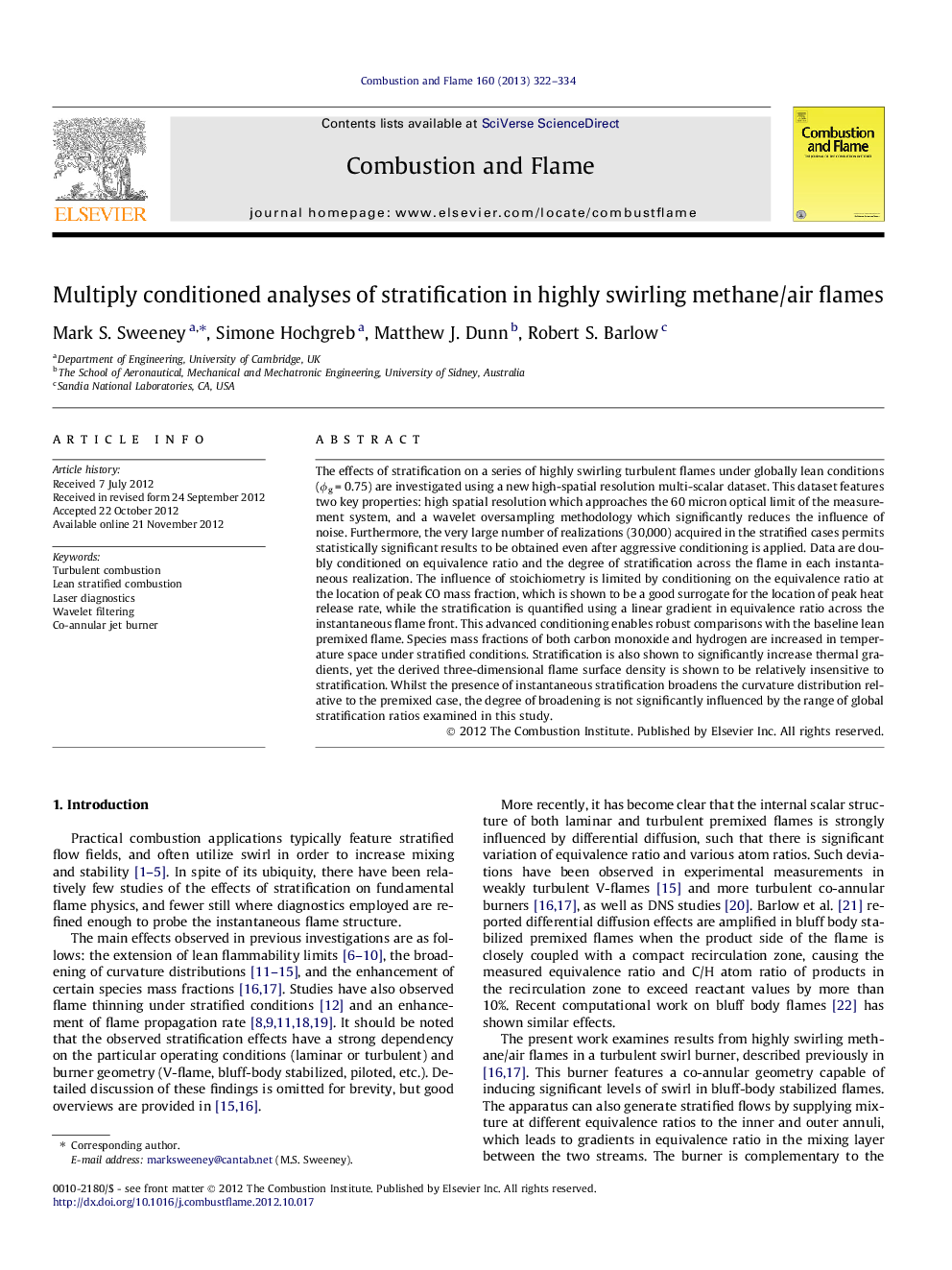| Article ID | Journal | Published Year | Pages | File Type |
|---|---|---|---|---|
| 10264730 | Combustion and Flame | 2013 | 13 Pages |
Abstract
The effects of stratification on a series of highly swirling turbulent flames under globally lean conditions (Ïg = 0.75) are investigated using a new high-spatial resolution multi-scalar dataset. This dataset features two key properties: high spatial resolution which approaches the 60 micron optical limit of the measurement system, and a wavelet oversampling methodology which significantly reduces the influence of noise. Furthermore, the very large number of realizations (30,000) acquired in the stratified cases permits statistically significant results to be obtained even after aggressive conditioning is applied. Data are doubly conditioned on equivalence ratio and the degree of stratification across the flame in each instantaneous realization. The influence of stoichiometry is limited by conditioning on the equivalence ratio at the location of peak CO mass fraction, which is shown to be a good surrogate for the location of peak heat release rate, while the stratification is quantified using a linear gradient in equivalence ratio across the instantaneous flame front. This advanced conditioning enables robust comparisons with the baseline lean premixed flame. Species mass fractions of both carbon monoxide and hydrogen are increased in temperature space under stratified conditions. Stratification is also shown to significantly increase thermal gradients, yet the derived three-dimensional flame surface density is shown to be relatively insensitive to stratification. Whilst the presence of instantaneous stratification broadens the curvature distribution relative to the premixed case, the degree of broadening is not significantly influenced by the range of global stratification ratios examined in this study.
Keywords
Related Topics
Physical Sciences and Engineering
Chemical Engineering
Chemical Engineering (General)
Authors
Mark S. Sweeney, Simone Hochgreb, Matthew J. Dunn, Robert S. Barlow,
